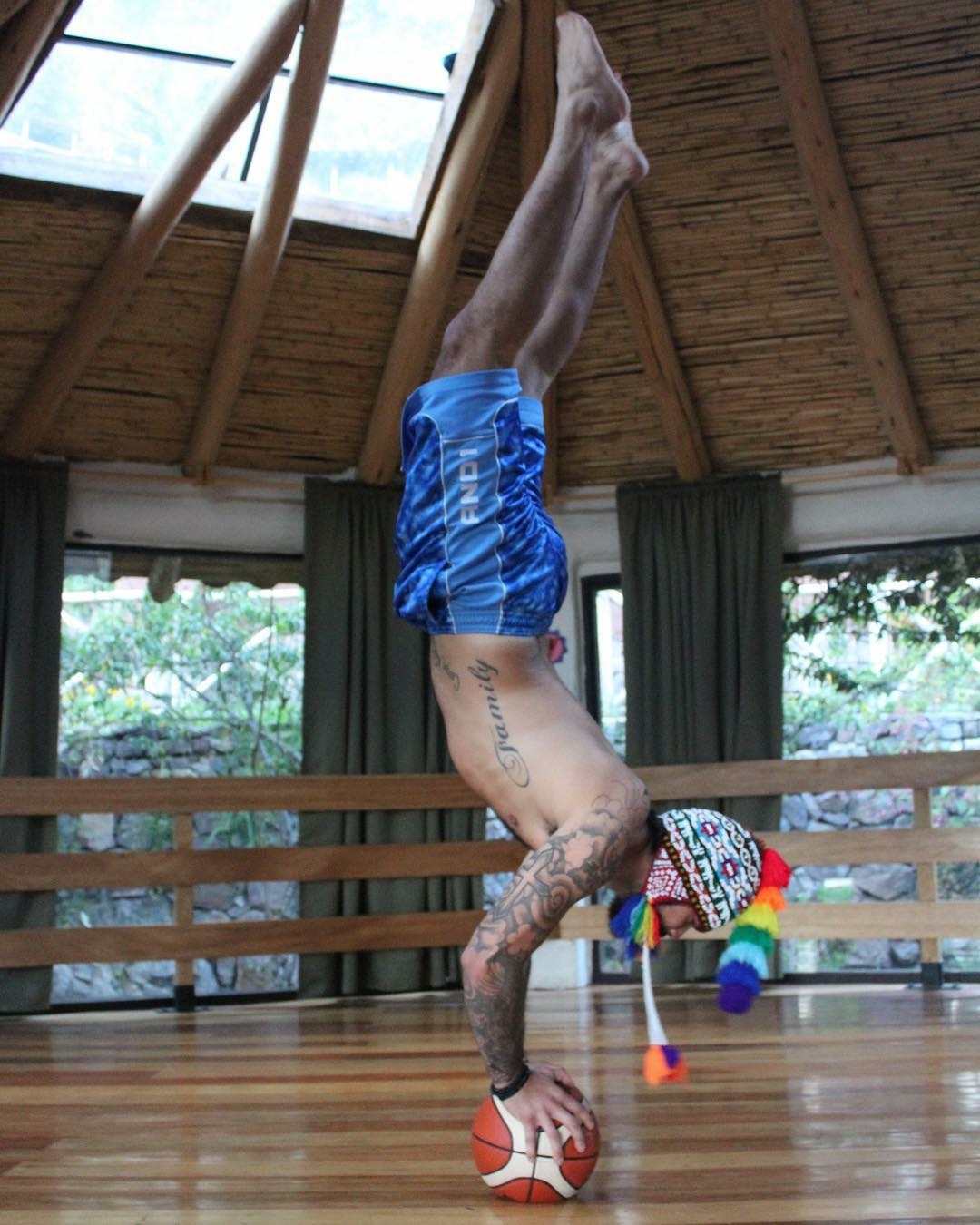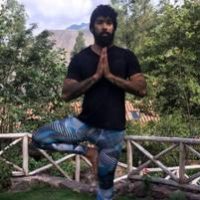I’d like to introduce my favorite form of meditation, my yoga off the mat, and my sadhana: basketball.
Some of you may be wondering what basketball has to do with meditation and yoga, or even what the heck “sadhana” means.
Sadhana is defined as a spiritual practice, meditation is a form of reflection, and the word “yoga” itself means union. Most of us are familiar with yoga as an asana (posture), movement, and/or breath control practice, but its roots don’t start there.
The history of yoga actually stretches far deeper—when the sage Patanjali compiled the Yoga Sutras (sometime around 200 BCE), “asana” actually referred to a seated posture.
He gives us an eight-limbed (ashtanga) path that lists both asana and dhyana (meditation/contemplation) as two of its main branches. However, these integral parts still only make up 25 percent of the yogic path.
In the Yoga Sutras, Patanjali shows us a systemic approach to kaivalya (liberation) that also includes yamas (ethics), niyamas (self-discipline), pranayama (breath control), pratyhara (sensory withdrawal), dharana (single-pointed concentration), and samadhi (sense of oneness, connection to the divine). These six practices complete the eight-pronged path I previously mentioned.
Asanas as we know them today weren’t even described in detail until around the 14th century, with the publication of the Hatha Yoga Pradipika. Shockingly enough, this text only lists 15 postures, none of which are standing. In the late 17th century, the Gheranda Samhita introduced 32 different asanas, over half of which were seated, and contained only one standing posture (tree pose).
It’s absolutely fascinating that what so many people think of as yoga today (down dog, sun salutations) is actually a relatively recent revelation. When the Yoga Sutras were written, asana still meant seated or sitting posture.
Patanjali’s yogic path is just one method toward liberation; each of us walks a different road.
It is important to note that this text was written from a dualistic point of view, although how it is interpreted is entirely up to the reader. The light at the end of it all remains the same, but our beliefs will take us down many winding roads to see it.
To this point, we’ve defined yoga (union), the yogic path (system/practice to attain liberation), and shed a little light on the history of yoga as an asana practice. Our journey now brings us back to the term “sadhana.”
In his English translation and commentary of the Yoga Sutras, the founder of Iyengar yoga, B.K.S. Iyengar, provides us with a deeper insight into the term:
“Sādhana is a discipline undertaken in the pursuit of a goal. Abhyāsa is repeated practice performed with observation and reflection. Kriyā, or action, also implies perfect execution with study and investigation. Therefore, sādhanā, abhyāsa, and kriyā all mean one and the same thing. A sādhaka, or practitioner, is one who skillfully applies…mind and intelligence in practice towards a spiritual goal.”
To bring this full circle, our sadhana, our spiritual practice, can be whatever we want it to be.
I personally interpret Ayengar’s quote to mean sadhana can be: following the yogic path, meditation, asana, walking, biking, hiking, basketball, eating, dancing, surfing, or whatever. It’s about feeling that connection to Source, and what “gets you there” may not be the same as what gets someone else “there.”
(Hint: “getting there” is kind of a misnomer—our natural state is bliss and “enlightenment,” and we’ve just forgotten our true self, but that’s a topic of discussion for another time.)
If we put our skills, our heart, and our soul into something, that’s pretty darn spiritual. If we continually hone, refine, and reflect, that sounds like a practice to me.
We don’t need to limit ourselves with a strict vision of what a spiritual practice is “supposed to look like.” If we love our practice, whatever it may be, it might just take us to heights previously unknown.

~


 Share on bsky
Share on bsky





Read 1 comment and reply